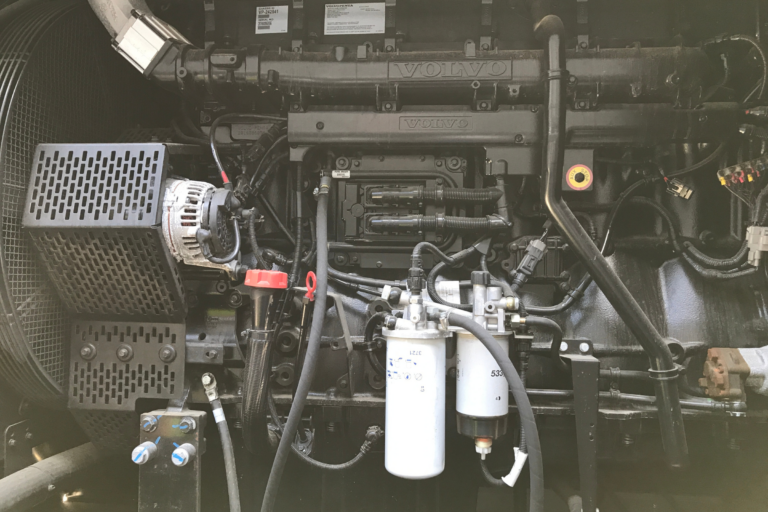Protect Your Engine, Maximize Efficiency, and Reduce Emissions
Wet stacking is a common but avoidable issue in diesel generator systems. When a diesel engine runs below its optimal temperature for extended periods—especially under light loads—unburned fuel and carbon accumulate in the exhaust system, causing a condition known as wet stacking. Left unchecked, wet stacking can lead to premature wear, performance degradation, and even regulatory fines.
In this article, we’ll explore what wet stacking is, how to identify it, and—most importantly—how to prevent it.
What is Wet Stacking?
Wet stacking occurs when a diesel engine fails to reach and maintain its proper operating temperature, usually due to insufficient load. For most diesel generators, operating below 60% load prevents complete fuel combustion. This leads to unburned fuel, soot, and carbon residue collecting in the exhaust, injectors, and combustion chamber.
Over time, this buildup becomes visible and damaging, reducing the generator’s efficiency, increasing emissions, and shortening its lifespan.
How to Know If Your Generator is Wet Stacking
Here are some common indicators that your generator may be experiencing wet stacking:
-
Black smoke coming from the exhaust during operation
-
Wet or oily residue (black ooze) forming around the exhaust outlet
-
Reduced performance and sluggish power output
-
Increased fuel consumption without corresponding load
-
Infrequent usage or long idle periods
-
Running consistently under 60% load
If you’re seeing any of these symptoms—or you know your generator hasn’t been exercised at proper load levels—it’s time to take action.
How to Prevent Wet Stacking
The key to preventing wet stacking is regular, high-load operation and proactive maintenance. Here’s what you can do:
✅ Load Test Regularly
Follow NFPA and manufacturer guidelines to exercise your generator weekly, running it at a minimum of 60% load. This ensures the engine reaches optimal combustion temperatures and burns off excess fuel.
✅ Perform Load Bank Testing
If your generator rarely sees real-world loads above 50%, schedule load bank testing with a certified technician. A load bank simulates full-capacity operation, burning off accumulated deposits and maintaining system health.
✅ Monitor Fuel and Temperature
-
Keep your fuel tank topped off with the correct type of diesel.
-
In cold climates, use fuel additives and preheaters to ensure combustion efficiency.
-
Avoid running the generator with either too little or too much fuel in the tank.
✅ Stick to a Maintenance Schedule
Routine inspections and servicing by a qualified technician will help catch early signs of fuel buildup and injector clogging before they become major issues.
Why It Matters: Consequences of Ignoring Wet Stacking
If left unaddressed, wet stacking can lead to a cascade of performance and maintenance issues, including:
-
Clogged injectors and filters from fuel residue
-
Backpressure in the exhaust system that damages engine components
-
Oil contamination, where unburned fuel leaks past piston rings into the oil pan, reducing the oil’s protective qualities
-
Excess emissions, which can result in EPA violations and fines in regulated jurisdictions
-
Decreased generator lifespan and more frequent repair intervals
-
Reduced power output, even if the generator appears to be functioning
Final Thoughts
Wet stacking is one of the most preventable diesel generator issues—and one of the most damaging if ignored. Regular exercise under load, proper fuel management, and preventive maintenance are critical to keeping your generator healthy and efficient.
Need help building a preventative maintenance plan or sourcing load testing equipment?
Explore tools, training, and insights from generator professionals at KnowerNetwork.com and ensure your power stays clean, consistent, and compliant.

